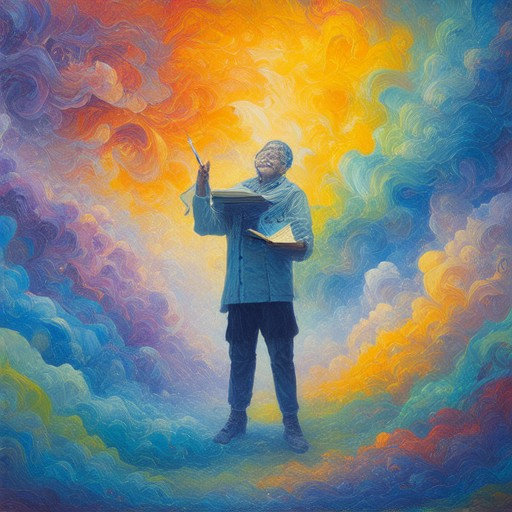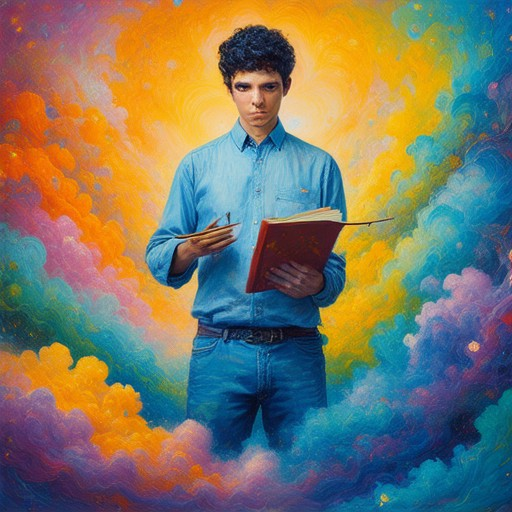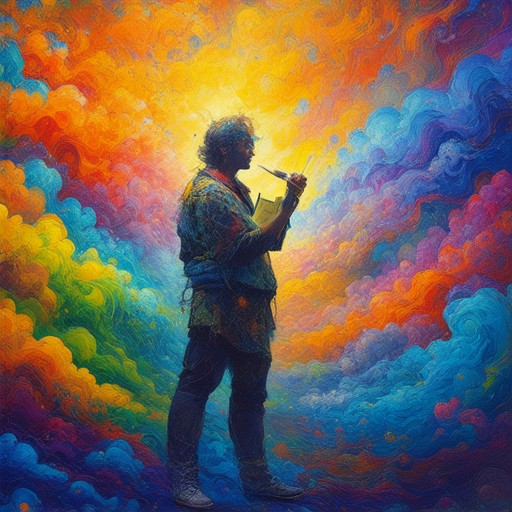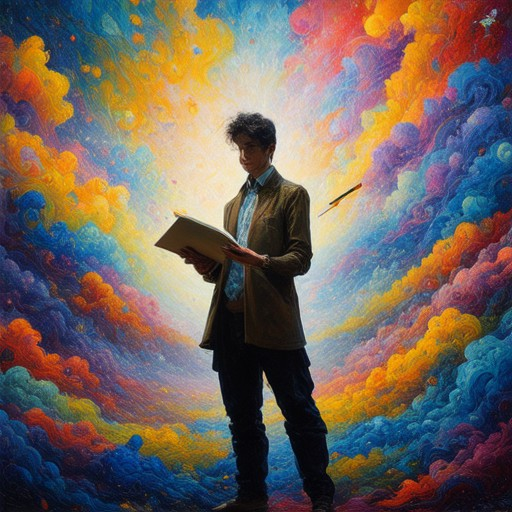Are you eager to unlock the secrets of artistic expression and elevate your creative prowess? Whether you’re a seasoned artist or just beginning, discovering effective artistic methods can transform your approach and inspire fresh ideas. This artistic methods blog delves into the fascinating world of artistic techniques, styles, and methodologies, offering insights that will empower your artistic journey. From exploring diverse artistic styles to mastering the keys to successful art creation, this guide is designed to be your ultimate resource for unlocking creativity and achieving artistic success.
Key Takeaways
- Visual Arts allow artists to express ideas through imagery, shapes, and colors, creating tangible works of art.
- Performing Arts combine movement, music, and theater for captivating storytelling and emotional expression.
- Literary Arts enable authors to share stories, thoughts, and emotions through written forms like novels and poetry.
- Applied Arts solve real-world problems and enhance daily life with innovative and functional designs.
- Digital Arts leverage technology to create innovative works using software and digital tools.
- Fine Arts focus on aesthetic value and craftsmanship, emphasizing intellectual and emotional depth.
- Culinary Arts create sensory experiences by combining flavors, textures, and presentation in food.
- Four Main Art Forms cover traditional (Fine), functional (Applied), dynamic (Performing), and cutting-edge (Digital) expressions.
- Seven Keys of Art provide a comprehensive framework for understanding and appreciating art, including creativity, technique, and cultural context.
- Creativity and Innovation drive artistic progress by challenging conventions and exploring new concepts.
- Aesthetics and Composition create impactful art through visual elements like color theory and form.
- Cultural Context reveals the stories, beliefs, and symbols embedded in artworks.
- Criticism and Interpretation enrich our understanding of art’s meaning and impact.
- Market and Value determine the economic worth of artworks, considering factors like rarity and demand.

What is an artistic method?
An artistic method refers to the techniques, approaches, and strategies used by artists to create works of art. These methods vary widely across different art forms and can involve both traditional and contemporary techniques. Below are some common artistic methods:
1. Drawing
- A fundamental medium in art, drawing allows artists to explore ideas, sketch concepts, and create detailed studies.
- Common tools include sketchpads, graphite pencils, ink pens, and digital tools for creating digital art.
- Drawings can be abstract, figurative, or representational, serving as a foundation for further artwork.
2. Painting
- Painting involves applying paint to surfaces such as canvas, paper, or wood.
- Techniques include oil painting, acrylic painting, watercolor painting, and spray painting.
- Paintings can be realistic, abstract, or Impressionistic, depending on the artist’s style.
3. Sculpture
- Sculpture involves creating three-dimensional objects or figures.
- Materials commonly used include clay, marble, bronze, wood, and metal.
- Sculptors may work in relief, where the subject is raised above the surface, or in the round, forming complete figures.
4. Printmaking
- Printmaking involves creating images on paper through printing techniques.
- Common methods include lithography, etching, screen printing, and relief printing.
- Prints can be reproductions of original artworks or unique pieces in themselves.
5. Photography
- Photography captures images using light-sensitive materials or digital sensors.
- photographers use cameras, lenses, and editing software to create photographs.
- Styles range from candid shots, portraits, landscapes, to experimental techniques like HDR photography.
6. Digital Art
- Digital art is created using computers and software programs like Adobe Photoshop, Canva, or Procreate.
- Artists can manipulate images, apply filters, and create digital paintings or illustrations.
- Digital art can be used in various fields, including gaming, advertising, and fine art.
7. Collage
- Collage combines diverse materials, such as paper, fabric, paint, and found objects, to create a unified artwork.
- Commonly used in mixed-media art, collages allow for layering and texture.
- Artists can experiment with different materials to achieve unique effects.
8. Ceramic Arts
- Ceramic arts involve working with clay and firing it to create pottery, tiles, or sculptures.
- Processes include throwing, modeling, glazing, and kilning.
- Ceramics can be functional, decorative, or sculptural, depending on the artist’s intent.
9. Mixed Media
- Mixed media art combines multiple mediums, such as painting, sculpture, and photography.
- Artists use a variety of materials to create layered, textured works.
- This approach allows for experimentation and innovation in artistic expression.
10. Performance Art
- Performance art involves live performances that combine movement, sound, and sometimes visual elements.
- Performances can be spontaneous or scripted, involving actors, musicians, or dancers.
- The goal is often to convey emotions, tell stories, or interact with the audience.
11. Street Art
- Street art is created in public spaces, often on walls, bridges, or other urban structures.
- Techniques include graffiti, stenciling, and murals.
- Street artists use vibrant colors and bold styles to make their work visible and impactful.
12. Fiber Arts
- Fiber arts involve working with natural fibers like wool, silk, cotton, or synthetic materials.
- Techniques include weaving, knitting, felting, and dyeing.
- Fiber art can be wearable, like clothing or accessories, or decorative, like tapestries.
13. Assemblage
- Assemblage art combines found objects, recycled materials, and everyday items to create a new artwork.
- Artists arrange these objects in meaningful ways to tell a story or evoke emotions.
- This method emphasizes creativity and resourcefulness.
14. Calligraphy
- Calligraphy is the art of beautiful handwriting, often used in writing, drawing, or designing letters.
- It is highly valued in various cultures for its aesthetic appeal and precision.
- Calligraphers can create decorative lettering, illuminated manuscripts, or formal scripts.
15. Encaustic Art
- Encaustic art involves the application of hot wax and resin to create layered, luminous surfaces.
- Colors and pigments are fused into the wax, creating a durable and dimensional artwork.
- This method is often used in creating religious icons and contemporary art pieces.
By exploring and mastering these artistic methods, artists can develop their unique styles and express their creativity freely. Whether traditional or modern, each method offers a distinct way to capture beauty, tell stories, and inspire others.
The Four Main Artistic Styles Explained
Art has evolved significantly over time, with various styles shaping the cultural landscape. Here are the four primary artistic styles that have had the most profound impact on art history:
1. Classical Art
Classical art refers to the art produced in ancient Greece and Rome, particularly during the Hellenistic period. Characterized by idealized human forms, harmony, and proportion, classical art emphasizes balance and symmetry. Key examples include sculptures like the Parthenon Marbles and paintings by artists such as Leonardo da Vinci and Michelangelo.
2. Impressionist Art
Impressionism emerged in the late 19th century, focused on capturing the fleeting nature of light and mood. Artists like Claude Monet and Pierre-Auguste Renoir used loose brushstrokes and vibrant colors to depict scenes en plein air. This style laid the foundation for modern painting techniques and emphasized the subjective interpretation of beauty.
3. Modern Art
Modern art encompasses a diverse range of artistic movements that emerged in the late 19th and early 20th centuries, including Cubism, Fauvism, Surrealism, and Abstract Expressionism. Artists like Pablo Picasso and Henri Matisse broke traditional norms, introducing new perspectives and materials. Modern art often explores themes of identity, emotion, and the human condition.
4. Abstract Art
Abstract art moves away from representing the physical world, instead focusing on form, color, and emotion. This style began gaining prominence in the mid-20th century, with Jackson Pollock and Mark Rothko leading the charge. Abstract art is highly personal, with artists using unconventional techniques to convey their inner visions.
These four styles have shaped the art world, influencing everything from fine art to popular culture. Each style brings its unique perspective, offering a glimpse into the creativity and diversity of human expression.
- Explore more about these styles on Artful Journey

Can an Art Blog Make Money?
Yes, an art blog can certainly make money with the right strategy and dedication. Below are several effective ways to monetize your art blog:
1. Display Ads Through Ad Networks
Join ad networks like Google AdSense or Mediavine to place ads on your blog. As your audience grows, your ad revenue will increase, potentially turning into hundreds or thousands of dollars monthly.
2. Affiliate Marketing
Promote art-related products and services through affiliate programs. Partner with companies like ArtStation or DeviantArt to earn commissions when your readers purchase products through your links.
3. Sponsored Posts
Collaborate with art supplies brands or other creators for sponsored content. Platforms like AsmartCookie connect bloggers with brands seeking promotion opportunities.
4. Sell Digital Products
Create and sell downloadable art files, templates, or guides through your blog. Use platforms like Sellfy to manage transactions and distribution.
5. Subscription Model
Offer premium content through a subscription service. Provide exclusive tutorials, high-resolution resources, or early access to new projects in exchange for a recurring fee.
6. Host Workshops or Webinars
Organize live events or online workshops focused on art techniques. Promote these events on your blog and charge admission to cover costs and generate profit.
Tips for Success
- Build a loyal audience by consistently sharing valuable content.
- Optimize your blog for SEO to attract more visitors.
- Engage with your community by responding to comments and messages.
- Use social media to promote your blog and reach a wider audience.
- Collaborate with other artists and creators to cross-promote your work.
By implementing these strategies, you can turn your passion for art into a profitable venture while sharing your expertise with others.

What Are the 7 Types of Art?
The world of art encompasses a diverse range of creative expressions, often categorized into distinct forms. Here are the seven primary types of art, each offering unique ways to explore creativity and self-expression:
-
Visual Arts
Visual arts include painting, sculpture, photography, drawing, printmaking, and more. These mediums allow artists to express ideas through imagery, shapes, and colors, creating tangible works of art.
-
Performing Arts
Performing arts involve live performances that combine movement, music, and theater. Examples include dance, theater, circus arts, and cabaret performances, where artists use their bodies and voices to tell stories and convey emotions.
-
Literary Arts
Literary arts encompass writing and poetry, allowing authors to share stories, thoughts, and emotions through words. This category includes novels, plays, essays, and other written forms of creative expression.
-
Applied Arts
Applied arts refer to art forms used in practical or functional contexts, such as architecture, design, crafts, and industrial art. These arts apply artistic principles to solve real-world problems or enhance daily life.
-
Digital Arts
Digital arts involve the creation of art using digital tools and technologies. This includes digital painting, 3D modeling, animation, and graphic design, where artists use software and computers to produce innovative works.
-
Fine Arts
Fine arts typically refer to traditional artistic disciplines that emphasize aesthetic value and craftsmanship. This category includes painting, sculpture, photography, and other media considered high art due to their intellectual and emotional depth.
-
Culinary Arts
Culinary arts involve the preparation and presentation of food as a form of art. Chefs and culinary artists create visually appealing dishes that combine flavors, textures, and presentation to create a sensory experience.
Exploring these art forms allows individuals to connect with their creativity and appreciate the diversity of human expression. Whether through visual masterpieces, captivating performances, or culinary creations, art continues to play a vital role in enriching our lives. To discover more about each art type and find resources to develop your skills, visit Artful Journey .
The Four Main Art Forms
The world of art is diverse, encompassing various mediums and expressions that reflect human creativity. While art can take many forms, there are four primary categories that are widely recognized and celebrated. These categories not only define the art forms but also provide a framework for understanding their purposes and applications.
- Fine Arts :
Fine arts typically involve creative expression through traditional mediums. This category includes painting, sculpture, photography, drawing, and printmaking. These art forms often focus on personal interpretation and emotional expression, creating pieces that are meant to be appreciated for their aesthetic and intellectual value. - Applied Arts :
Applied arts involve the creation of functional objects or designs that serve practical purposes. This category includes crafts, architecture, interior design, fashion, and industrial design. Applied arts aim to solve problems or improve daily life through innovative and beautiful solutions. - Performing Arts :
Performing arts are live performances that combine movement, sound, and sometimes visuals to tell stories or convey emotions. This category encompasses theater, dance, music, circus arts, and cabaret. Performing arts rely heavily on interpretation and collaboration to bring narratives to life. - Digital Arts :
With the rise of technology, digital arts have emerged as a significant category. This includes digital painting, 3D modeling, animation, video art, and interactive installations. Digital arts leverage tools like software programs (e.g., Adobe Photoshop, Blender) and digital platforms to create works that often blend traditional techniques with modern innovation.
Each of these art forms plays a unique role in society, offering opportunities for self-expression, cultural preservation, and societal critique. Whether you prefer the static beauty of fine arts, the functionality of applied arts, the dynamic energy of performing arts, or the cutting-edge creativity of digital arts, there’s something for everyone to appreciate.

What Are the 7 Keys of Art?
The Seven Keys of Art provide a comprehensive framework for understanding and appreciating art. These principles help artists, collectors, and enthusiasts gain deeper insights into the creation, interpretation, and value of art.
1. History and Evolution
Understanding the historical context of art allows us to connect with the intentions of creators and the cultural shifts that influenced their work. From ancient cave paintings to contemporary installations, art evolves based on societal changes and technological advancements.
2. Technique and Medium
The medium, whether paint, clay, or digital tools, defines the artist’s approach. Mastery of technique transforms ideas into tangible expressions, showcasing the craftsmanship and innovation behind each piece.
3. Creativity and Innovation
Creativity is the spark that ignites artistic expression. Artists challenge conventions, explore new concepts, and push boundaries to create something unique and meaningful. This key emphasizes the role of imagination in driving artistic progress.
4. Aesthetics and Composition
Aesthetics involve the visual elements that make art pleasing and impactful. Composition, color theory, and form are critical components that create harmony and draw viewers into the artwork.
5. Cultural Context
Art is deeply rooted in culture, reflecting the values, beliefs, and stories of the time it was created. Understanding the cultural background helps us decode the symbolism and significance of artworks.
6. Criticism and Interpretation
Interpreting art involves personal and sometimes subjective experiences. Critics and viewers bring diverse perspectives to their analysis, enriching our understanding of the artwork’s meaning and impact.
7. Market and Value
The art market determines the economic worth of artworks, influenced by factors like rarity, demand, and historical significance. Valuation experts assess both intrinsic and extrinsic factors to determine an artwork’s market value.
Exploring these seven keys enhances our appreciation for art, enabling us to engage with it on a deeper level and understand its multifaceted nature.




0 Comments